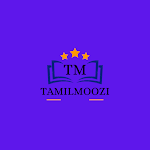Narendra Nath Datta (l863–1902), later known as Swami Vivekananda,was the prime follower
of Ramakrishna Paramahamsa. An educated youth, he was drawn to Ramakrishna’s
message.Dissatisfied with conventional philosophical positions and practices, he advocated the practical Vedanta of service to humanity and attacked the tendency to defend every institution simply
because it was connected with religion. He emphasized a cultural nationalism and made
a call to Indian youth to regenerate Hindu society. His ideas bred a sense of self-confidence
among Indians who felt inferior in relation to the materialist achievements of the West. He
became famous for his addresses on Hinduism at the 1893 World Congress of Religions in
Chicago. Despite his fame, he was condemned by orthodox Hindus for suggesting that the
lower castes should be allowed to engage in the Hindu rituals from which they were traditionally excluded. Vivekananda’s activist ideology rekindled the desire for political change among many western-education young Bengalis. Many of the youths who were involved in the militant nationalist struggle during the Swadeshi movement following the Partition of Bengal were inspired by Vivekananda.
Among the Sikhs of Punjab too there were attempts to reform. Baba Dayal Das, founder of
the Nirankari Movement, stressed the worship of god as Nirankar (formless). Rejection of idols,
rejection of rituals associated with idolatry, reverence for the authority of Guru Nanak
and of the Adi Granth formed the essence of his teachings. He reiterated the prohibition on
meat-eating, and liquor consumption.The Namdhari Movement, founded by Baba Ram Singh, was another socio-religious movement among the Sikhs. The Namdharis insisted on wearing the symbols of Sikhism except the kirpan (sword). Instead Baba Ram Singh wanted his followers to carry a lathi. It
considered both men and women equal and accepted widow remarriage. It prohibited the dowry system and child marriage.In the wake of the gathering influence of Arya Samaj and the Christian missionaries, the Singh Sabha of Amritsar was established. Its main objective was to restore the purity
of Sikhism. With the support of British, it established Khalsa College for the Sikhs in
Amritsar. Singh Sabha was a forerunner of Akali Movement.
Popularly known as Vallalar, Ramalinga Swamigal or Ramalinga Adigal (1823–1874),was born in Marudhur, a village near Chidambaram.After his father’s death, his family moved to his brother’s
house at Chennai. Despite having no formal education he gained immense scholarship. Ramalinga
emphasised the bonds of responsibility and compassion between living beings. He expressed
the view that ‘those who lack compassion for suffering beings are hard-hearted, their
wisdom clouded’. He showed his compassion and mercy on all living beings including plants.
This he called jeevakarunya. He established the Samarasa Vedha Sanmarga Sangam in 1865 and
it was renamed “Samarasa Suddha Sanmarga Satya Sanga” which means “Society for Pure
Truth in Universal self-hood”. Ramalinga also established a free feeding house for everyone
irrespective of caste at Vadalur (1867), in the wake of a terrible famine in south India in
1866. His voluminous songs were compiled and published under the title Thiruvarutpa (Songs
of Grace).
10th Tamil And English Public Exam 2024 Original Toppers Script..







0 கருத்துகள்